The pressures of modern life may sometimes become unbearable, especially for those who are students without a clue what can the future bring, or people who have a lot of work to do. That's why I have decided to publish this web page for you to enjoy your free time and for me to be in a contact with you and to inform you about all I am interested in, what I am doing and where I am at the moment. My name is Jiri Dlouhy and I am currently studying English at Chichester College of Arts, Science and Technology in England. I am a part-time student at the college. I go there 2-4 times a week, because I am working as an au-pair here at the same time (in the village called Nutbourne, which is about 5 miles from Chichester in the south of England). I am 24 years old and I was born on October 16th, 1977, in Kladno, Czech Republic, timezone GMT +01:00. [Kladno is situated in Bohemia, Czech Republic. It is an industrial center of the coal-mining region, it has large iron and steel plants, and manufactures machinery and steel alloys. Known in 973, Kladno grew rapidly with the opening of its first coal mine in 1846.] 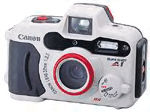
13/11/01 I bought a new compact 35 mm camera Canon Sure Shot A-1 last week, which is designed for sports enthusiasts. The A-1 was engineered to perform under the toughest conditions. Beneath the Sure Shot A-1's rugged exterior lies an impressive array of sophisticated electronic features. So waterproof, it floats--even when loaded with film and batteries! And yet the A-1 is extremely sleek and light. Count on beautifully focused photos under the widest range of conditions. Plus unbeatable reliability and ease of operation. I have also one load of photos already developed, but nothing special, if you know what I mean, maybe next film will be better. I just hope it's not a waste of money. So now I am gonna go and shoot more photos... 26/10/01 I am back at the college, preparing myself for CAE (Cambridge exam in Advanced English), but I am not gonna pass it, I know it... And I booked my ticket to go back home. I look forward to seeing everyone. So this is a notice for my friends: Who wants to see me, you have a chance on 21th of December at Florenc coach station in Prague at about 14:30. Oahhh God, Christmas again... 22/08/01 I look forward to my trip to France od Friday the 24th. I am gonna take a bike and I'll take a ferry from Portsmouth (England) to Le Havre (France) and I'd like to visit some places and villages around.
(LE HAVRE, France. In French, le havre means "the harbor" or "the port," and the city of Le Havre is the second largest French port. Located in northern France, it is on the English Channel coast and on the right bank of the Seine River estuary. The city is 134 miles (216 kilometers) west-northwest of Paris.
The harbor maintains an important transatlantic trade, mainly with North America. Regular train- or car-ferry services run to England and Ireland. Le Havre's main imports are fuel oil and such tropical goods as coffee and cotton. Industries include oil refining, the processing of timber, and the manufacture of machinery and rope.
Air raids during World War II caused enormous damage. A museum, built in 1961, houses a collection saved from the old museum that was destroyed in 1944. The spacious Place de l'Hôtel de Ville, in the center of the city, is typical of present-day architecture.
Le Havre was only a fishing village until 1517, when a harbor was built. Under various French rulers, the harbor continued to expand and adapt to accommodate larger vessels. Development has continued. Population cca 200,000. ) 05/08/01 I have been on holiday in Holland (one week cycling around Arnhem. I visited 2 national parks - Veluwe and Veluwezoom). By the way, I also visited the Airborne Museum 'Hartenstein', which is something like a memorial to remember the battle of Arnhem during the World War II. 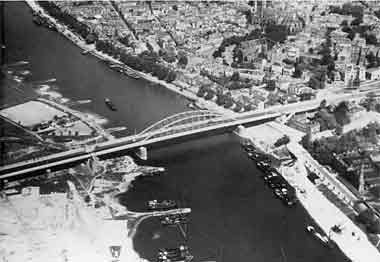 (If you don't know what happend that time, read the following: In September 1944 more than ten thousand British and Polish Airborne troops fought in and around Arnhem as a part of the Operation Market Garden, the largest Airborne operation ever. Their objective was to take the Rhine bridge. Six hundred of them managed to reach the bridge. Waiting for reinforcements they fought for four days holding the Norhern ramp. The rest of the force, however, didn't succeed in reaching them. Those held out for five more days at Oosterbeek before finally making their way across the Rhine to Allied held ground. Only 2.293 made it back to England. The Germans won. During the battle the Hartenstein hotel in Oosterbeek was the headquarters of the British divisional commander, Major-General R.E. Urquhart. The Airborne Museum is situated in this very building. There you can follow the events of the battle as they materialised: from the air landings, the march to the bridge, the fierce fighting in Arnhem and Oosterbeek, to the crossing of the river. British and German arms, equipment and ammunition, abandoned at Arnhem some dug up in later times, authentic film footage, true to life dioramas and an audiovisual presentation make a penetrating picture of the tragedy for which Arnhem and Oosterbeek were the stage in September 1944.)
13/07/01 The children I look after now are having their summer holidays for 2 months, so I am having quite busy time now...
29/06/01 I have been doing my FCE English certification last week and need to wait approximately 2 months to get my results from Cambridge (I hope I pass). 30/05/01 You can see the photos of my classmates that I scanned in on the right of the page. 23/05/01 I've been to Czech Republic for two weeks,I had a great time and I'm gonna add some photos during next week.(it depends on my living conditions,when they give me a bit of free time) 28/04/01 Im preparing myself for FCE First Certificate in English at the Chichester College of Arts, Science and Technology. Its gonna be quite hard work during following weeks, because I know hardly anything from the amount of knowledge that Im suppose to know (I mean grammar and use of English, of course). First part of my exam starts on 16th of June, so: God stay with me, please. Here is the list of examinations that we can do here in Chichester:
1. KET - Key English Test
2. PET - Preliminary English
3. FCE - First Certificate in English
4. CAE - Cambridge Advanced English
5. CPE - Cambridge Proficiency Examination
6. TOEIC - Test of English as a Foreign Language
7. IELTS - Academic Foundation Course 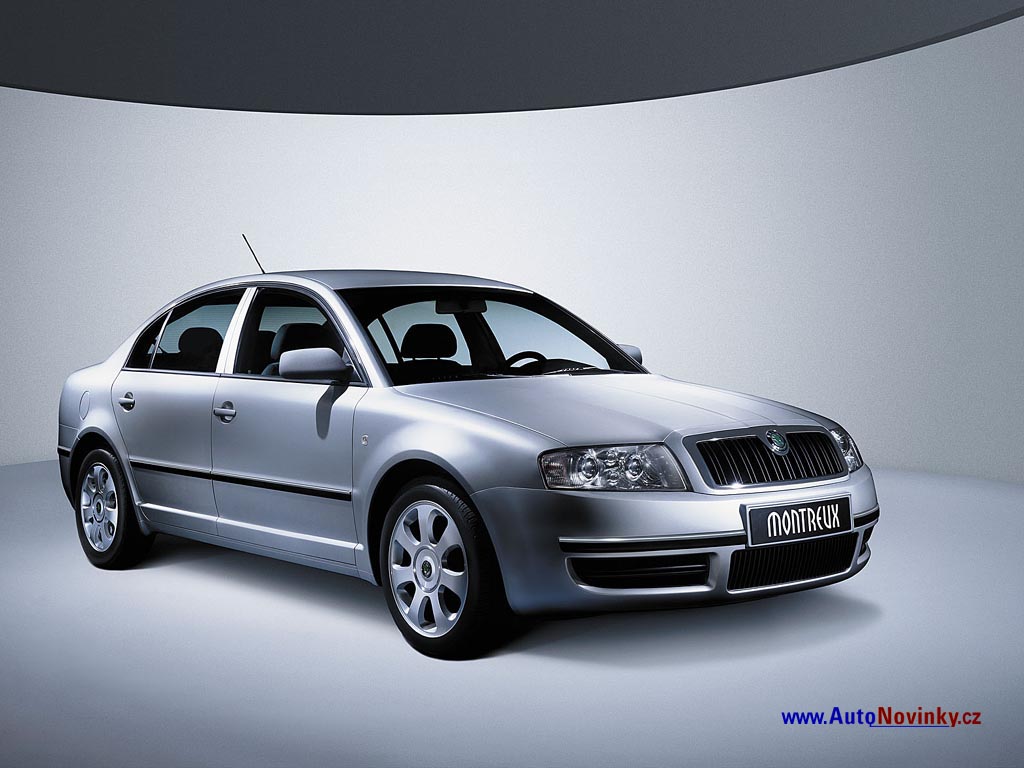
No, it's not a joke
Skoda wins best car Did you already hear that Skoda was named best car? Now its the Czech car manufacturers the perennial butt of countless jokes who have a smile on their faces: What Car? magazine named the Skoda Fabia its Car of the Year 2000.
The accolade should go some way to ditching Skodas tatty image. The car, which costs between £7.599,-- and £11.699,--, beat off expensive competitors Mercedes, Lexus and Porsche to ride away with the title.
The magazine said it had defied sceptics with its unbeatable drive, package, refinement and value.
What Car? editor Steve Fowler said: It seems that a new dawn has arrived for Skda which will lead to the Czech manufacturer breaking out from the chains of its previous image. Skoda has elevated the super-mini beyond what could reasonably be expected of larger cars only a few years ago.
As far as we are concerned, the turnaround for Skoda is complete.
Skoda is the third oldest car manufacturer in the world and makes 400.000 vehicles for worldwide markets. In the UK, 24.000 Skoda models were bought in the year 2000.
After once being the mainstay of stand-up comedians because of its reputation for being unstylish and unreliable, Skodas fortunes began to turn around when the company was bought by Volkswagen.
German engineers began to give Skoda models the same features enjoyed by Volkswagen drivers.
2000s award is not the first for Skoda - its Felicia and Octavia models won car of the year titles during the 1990s. 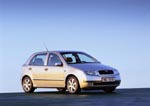
From laughing stock to fabulous SKODA FABIA 1905
The firm SKODA was founded in 1895 by two Czechs, mechanic Václav Laurin and bookseller Václav Klement, to make bicycles. Ten years later they produce their first car, the Voiturette A (1905). It was a hit.
1959
Skoda survives the depression and being turned into a weapons factory during the war. In 1946, the Czech government gives it a monopoly on passenger car production. Models include the Felicia.
1988
The company loses ground in the international market throughout the Sixties and Seventies. In 1988, the Skoda Estelle (Skoda 130 L) is voted the worst car in Britain by What Car? magazine.
2000
The Skoda Fabia wins the Car of the Year Award. Sales grow by six per cent worldwide in 1999. Most are sold in Western Europe. The Skoda Octavia competes in the World Rally Cahmpionship. 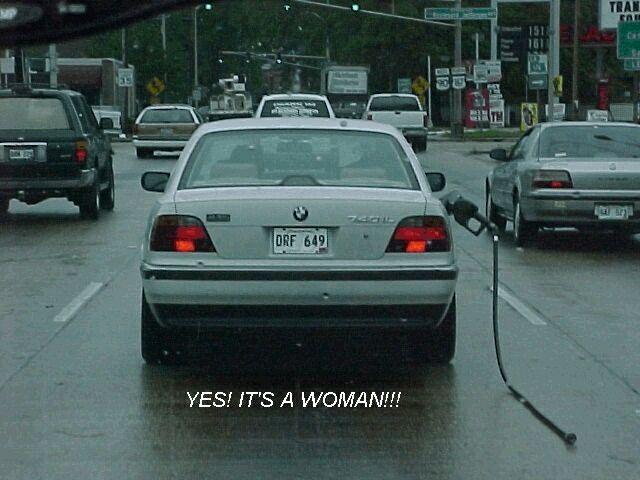
KEY WORLD FACTS * World population in 2000: 6,091 million
(3,069 million males and 3,022 million females).
The population passed 6 billion in February 1999.
* World population under 30 in 2000: 3,397 million
* Number of illiterate people: 960 million
* Average world life expectancy: 64.7 years for males; 69.9 years for females
* Annual world population increase: 80-85 million people
* Urban population: 46.1% of total population
* Number of TV sets: 1.36 billion
* Number of radio receivers: 2.18 billion
* Number of cigarettes smoked: 5,600 billion a year
* Number of Internet users: 304 million
* Number of motor vehicles on the road: 647 million
* Number of people who cross international borders every day: 2 million
* Number of people lacking clean drinking water: 1 billion
* Number of people lacking adequate sanitation: 3 billion Some of the best Czech athletes: 1. JAROMI´R JÁGR, Ice Hockey Player. Jágr is possibly Czech Republic's biggest star. He currently plays for the Pittsburgh Penguins in the NHL and was the first European to score over 140 points in one NHL season. Unquestionably one of the worlds best at his game.
2. JAROSLAV HASEK, Ice Hockey Player
3. ROBERT LANG, Ice Hockey Player
4. JAN ZELEZNY´, Javelinist, winner of consecutive Olympic gold medals, and currently the world Record holder with a throw in May, 1996 of 98.48m (269.14 ft).
5. JANA NOVOTNÁ, Tennis Player, The Czech Republic's highest-ranked female tennis player; a regular winner of WTA titles.
6. PETR KORDA, Tennis Player, The Czech Republic's highest ranked male tennis player and a key member of the Czech Davis Cup team.
7. IVAN LENDL, Tennis Player
8. MARTINA NAVRÁTILOVÁ, Tennis Player, the dominant woman in tennis during the 1980s. She won top world honours in 1979 and 1982-1986 with a colossal forehand. She defected to the United States in 1975 during normalisation the darkest period of communist rule in Czechoslovakia.
9. KAREL POBORSKY´, Soccer Player, this player was the star of the Euro 96 tournament, and joint winner (with Patrik Berger) of the Czech Player of the Year award. He moved than to English giants Manchester United.
10. PATRIK BERGER, Soccer Player, like Poborsky´, a key member of the heroic Euro 96 squad who now plays in England. Berger, something of a heart-throb, is now with Liverpool FC.
11. MARTIN DOKTOR, Canoeist, The 1996 Czech Sportsman of the Year, and a gold medal winner at the Atlanta Olympics.
12. KAREL LOPRAIS, Rally Driver, Loprais drove his Tatra to victory in the trucks section of the 1996 Paris-Dakar rally. A triumph for Czech sport, and rugged Czech engineering!
JAROMIR JAGR
Jagr, Jaromir (born 1972), Czech-born U.S. hockey player. The Czech Republic men's hockey team triumphantly took their first gold medal ever at the 1998 Winter Olympics in Nagano, Japan, with Pittsburgh Penguin right wing superstar Jaromir Jagr helping to lead the team to victory. Unequaled in one-on-one scoring moves, the talented Jagr helped lead the Penguins to the Stanley Cup championships in his first two seasons with the team. A month before his Olympic win, he signed a multi-million dollar contract with the Penguins, becoming the highest paid player in the National Hockey League (NHL) at the time.
Jaromir Jagr was born on Feb. 15, 1972, in Kladno, Czechoslovakia. Possessing natural talent and ease on the ice, Jagr began playing hockey in his native country and was named to the Czechoslovakian League all-star team during the 1989-90 season. At age 18, barely speaking a word of English, he was selected by the Pittsburgh Penguins in the first round of the 1990 NHL draft. He was the Penguins' first pick and was fifth overall in the draft. He was named to the NHL all-rookie team his first season. He led the Penguins to the Stanley Cup championships in his first two NHL seasons, in 1991 and 1992, leading a comeback over the favored New York Rangers in the 1992 playoffs after teammate Mario Lemieux broke a hand. Jagr was awarded the Art Ross Trophy for leading the league in scoring during the 1994-95 season. Widely considered one of hockey's elite he was chosen to play in several all-star games during the course of his career.
With the retirement of his teammate Mario Lemieux, Jagr became the cornerstone of the Penguins team. In January 1998, he signed a contract worth 48 million dollars over the next six years with the Pittsburgh Penguins making him the highest-paid player in the NHL at the time. Standing 6 feet 2 inches (1.9 meters) tall and weighing over 200 pounds (90 kilograms), with long hair that flowed out from beneath his helmet, Jagr was popular among younger Penguin fans.
During the 1998 Winter Games in Nagano, Jagr was one of 11 NHL players on the Czech Republic team. He helped his team triumph over both the Canadian and American teams--both favored coming into the tournament. The Czechs went on to beat the Russians in the gold-medal game. Their victory marked the first gold medal the Czech Republic had ever won in hockey. Jagr wore the same number in the Olympics, number 68, as he did while playing for the Penguins. The number serves as a reminder of the Soviet-led invasion of Czechoslovakia in 1968, four years before he was born.
CZECH CUISINE
(One typical Czech recipe included)
The Czech land is located in the centre of Europe and under the influence of their neighbours. Their original Slavic taste for souring foods with sour cream, lemon, vinegar or green grapes is greatly influenced by the schnitzel from Vienna, the goulash from Hungary and sauerkraut from Germany.
Czech food isn't light but it is a good food. We love the dumplings, all sorts (bun-dumplings, potato dumplings, raised dumplings and many others), and the pork is our favored meat. From picturesque farms comes geese (much favored over a duck), chickens and trout from mountain streams. Our harvest carp from ponds for Christmas eve meal. Many kinds of variety of delicious edible mushrooms come from virgin woods and meadows. We know and like cereal products such as noodles. Our superbly delicious rye breads are served with cold meats and cheeses. Our Sunday dinner starts with a soup with liver dumplings, main meal is dumplings, sauerkraut and roasted porkchops, or geese. And naturally, it is the Budweiser Budvar or Pilsner Urquel to top every dish. Our favourite food is not very healthy, but we are beginnig to cook healthier meals. Pork and beef is being replaced by poultry and fish. Czech main meal of the day is lunch, unlike in England where it is dinner.
RECIPE:
Roasted pork, bun-dumplings and cabbage or sauerkraut
Select centre cut of pork loin, whole and uncut with bone, 3-4 pounds, well trimmed but with about eighth of and inch of fat covering the meat. Season with salt, pepper and caraway seeds. Wrap in foil, precook for about 2 hours in 400-430 F oven. (Prepare and cook cabbage and bun-dumplings).
Than unwrasp from the foil, prick all over namely fatty portions of the loin. Roast for 30 minutes adding water and pasting the loin with it and turning every 5 minutes until golden brown. (Or can be roasted on the spit). Finished meat should be very tender and juicy. (The pork soldtoday in the US is considerably leaner than in the past due to refined technique of raising pigs). From remaining juices scoop up fat, add water, cook for 5 minutes making tasty sauce. Cut meat, serve with cabbage, or red cabbage or sauerkraut and bun-dumpling with the sauce over. This national (Sunday) Czech dinner should be washed down with Pilsener beer (the famous native drink).
Bun-dumplings: (We need: 1 lb farina /or flour/; 2 cups lukewarm water; 1 scant cup of milk; 2-3 eggs; 1 tablespoon salt; 5 large /old/ buns, horns or white bread). First cut (old) buns, horns or white bread into small croutons. If fresh, toast or frie so they are crisp. Select the best farina or flour you can get. Mix water, milk, eggs, and salt, keep adding farina until dough is smooth and makes bubles and doesnt stick to the bowl. Mix in croutons. Divide into 4 parts, form uplong ball dumplings. Let set for about 30 minutes. Place into salty boiling water, cook for about 25 minutes. Cut with string.
CZECH NAMES TO KNOW
1. VÁCLAV HAVEL (born October 5, 1936 - A playwright and human rights activist who was jailed three times for his political views. He became president of Czechoslovakia after the fall of communism in 1989, and is now the president of the Czech Republic.
2. TOMÁS BATA (1876-1932 - An industrialist and one of the first to employ profit sharing in Europe. His factory in Zlin in the Czech Republic at one time employed 20.000. His grandson, Thomas G. Bata, now runs the worldwide shoe empire from Canada.
3. OTTO WICHTERLE - He discovered first soft contact lenses.
4. FRANZ KAFKA (1883-1924)- An influential writer whose works describe modern man as powerless and alienated in an incorrigible world. His novels were not printed until after tuberculosis claimed his life.
5. BOZENA NEMCOVÁ (1820-1862) - Sometimes known as the lady on the 500-crown note, she is also considered one of the Czech Republics most important writers. Her novel Babicka is required reading by every elementary school child in the country. She was also involved in the Czech National Revival movement.
6. JAROSLAV SEIFERT
7. ST. LUDMILA (860-921)- The first Christian princess of Bohemia and mother of Václav (St. Wenceslav). She is the patron saint of Bohemia.
WILL THE ADVANCES IN SCIENCE AND TECHNOLOGY BEING MADE AT PRESENT IMPROVE OUR EVERYDAY LIVES?
* We are going to see the fastest changes in history. Revolutions are times of confusion. The spread of new ideas can turn the lives of millions upside down. The only certain thing is that the outcome is never clear from the start.
* The Internet pioneers of the 1970s hadn't a clue that what people would really love about the Net was e-mail. Its often the unforeseen outcomes of revolutions that make the biggest impact. We can await progress, which has the potential to create endless possibilities: worlds in which people spend their whole lives online, where distance becomes irrelevant and paper money loses its worth. Which of these possibilities will flourish and which will fail?
* Television, mobiles, radio, Internet, diary etc., one day everything will be merged into one package. At the heart of the coming change is the mobile phone. The use of mobile phones is growing exponentially, and they are especially popular with teenagers. An important issue is if the use of mobile phones might affect health. At present it is not possible to say that exposure to RF radiation, even at levels below national guidelines, is totally without potential adverse health effects. But what will happen in the future with the amount of radiation entering the head? Very soon, talking to somebody will be the least exciting thing to do with a mobile. Mobile phones are about to become portable Internet terminals. Already in existence are the WAP and GPRS wireless systems which support the Internet on mobile phones and thats just beginning. Soon it will be possible to use the mobile to film and view video, surf the Web and sell your house. The only thing limiting us is our imagination. Everything, anywhere... whether youre in Prague or Tokyo, all the information youll ever need will be on tap. When the wireless world meets the next generation Net, nothing will be the same again. Already, the SIM card inside every digital cellphone tells the cellular network who your are. So why stop with the network? The Finnish government is already experimenting with the idea of turning these chips into electronic ID cards and passports. Soon, the number of phone calls between people will be overtaken by machines talking to machines on behalf of people. For example it will be our fridge having a conversation with the washing machine!
* There is also location technology. Some companies are already designing tiny cellphone transmitters to fit in childrens clothing so worried parents can find them at all times. Ranchers could keep tabs on their cattle the same way. These ideas may seem outlandish to us, but well come to rely on it just as we do on electricity. We don't think about electricity, its just there.
* On the other hand, our planet is sick, and regardless of the technical and microelectronic progress, we have many global problems. I dont think, it is right, that we will depend on computers and robots for everything in the future. Also I dont want to have genetically modified foodstuffs, which are made from modified plants, in the supermarkets. And what about problems such as: the use of nuclear power, global warming, the ozone hole, acid rain, the destruction of rain forests, expansion of deserts, and the expanding world population etc...
* To sum up, all todays advances in science are just the beginning of new discoveries in the future. I hope, that the scientists will be able to find a way to cure some illneses, as soon as possible, such us: Parkinsons disease, AIDS and Leukaemia... We are hoping that scientists will give us the answers to all our global questions and problems. All inhabitants on our planet Earth hope that civilization will thrive for many centuries to come.
(... an article created in February 2001 by JIRI) |




